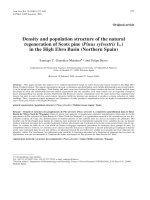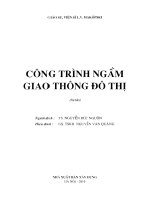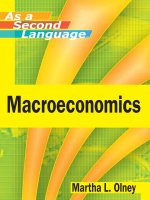macroeconomics marta l olney EB
Bạn đang xem bản rút gọn của tài liệu. Xem và tải ngay bản đầy đủ của tài liệu tại đây (1.57 MB, 354 trang )
Macroeconomics
as a Second Language
Macroeconomics
as a Second Language
Martha L. Olney
University of California, Berkeley
John Wiley & Sons, Inc.
VP & PUBLISHER
ACQUISITIONS EDITOR
PROJECT EDITOR
SENIOR EDITORIAL ASSISTANT
ASSOCIATE DIRECTOR OF MARKETING
ASSISTANT MARKETING MANAGER
PRODUCTION MANAGER
ASSISTANT PRODUCTION EDITOR
CREATIVE DIRECTOR
SENIOR DESIGNER
COVER DESIGNER
George Hoffman
Lacey Vitetta
Jennifer Manias
Emily McGee
Amy Scholz
Diane Mars
Janis Soo
Elaine S. Chew
Harry Nolan
Kevin Murphy
RDC Publishing Group Sdn. Bhd.
This book was set in 10/12 Times by Laserwords Private Limited, Chennai, India and printed and
bound by Courier Westford. The cover was printed by Courier Westford.
Founded in 1807, John Wiley & Sons, Inc. has been a valued source of knowledge and understanding
for more than 200 years, helping people around the world meet their needs and fulfill their aspirations.
Our company is built on a foundation of principles that include responsibility to the communities we
serve and where we live and work. In 2008, we launched a Corporate Citizenship Initiative, a global
effort to address the environmental, social, economic, and ethical challenges we face in our business.
Among the issues we are addressing are carbon impact, paper specifications and procurement, ethical
conduct within our business and among our vendors, and community and charitable support. For more
information, please visit our website: />Copyright © 2011 John Wiley & Sons, Inc. All rights reserved. No part of this publication may be
reproduced, stored in a retrieval system or transmitted in any form or by any means, electronic,
mechanical, photocopying, recording, scanning, or otherwise, except as permitted under Sections 107
or 108 of the 1976 United States Copyright Act, without either the prior written permission of the
Publisher, or authorization through payment of the appropriate per-copy fee to the Copyright
Clearance Center, Inc., 222 Rosewood Drive, Danvers, MA 01923, (978)750-8400, fax 978-646-8600
or on the web at www.copyright.com. Requests to the Publisher for permission should be addressed to
the Permissions Department, John Wiley & Sons, Inc., 111 River Street, Hoboken, NJ 07030-5774,
(201)748-6011, fax (201)748-6008, or online at />Evaluation copies are provided to qualified academics and professionals for review purposes only, for
use in their courses during the next academic year. These copies are licensed and may not be sold or
transferred to a third party. Upon completion of the review period, please return the evaluation copy
to Wiley. Return instructions and a free of charge return mailing label are available at
www.wiley.com/go/returnlabel. If you have chosen to adopt this textbook for use in your course,
please accept this book as your complimentary desk copy. Outside of the United States, please contact
your local sales representative.
To order books or for customer service please, call 1-800-CALL WILEY (225-5945).
Library of Congress Cataloging-in-Publication Data
Olney, Martha L., 1956- author.
Macroeconomics as a Second Language / Martha L. Olney.
p. cm
Includes index.
ISBN 978-0-470-50538-0 (pbk.)
1. Macroeconomics. 2. Macroeconomics—Terminology. I. Title.
HB172.5.O46 2010
339—dc22
2010047243
Printed in the United States of America
10 9 8 7 6 5 4 3 2 1
To my students
This one’s for you!
About the Author
Martha L. Olney is an award-winning teacher of economics and the author of
several economics textbooks. She is the recipient of Distinguished Teaching Awards
from the University of California at Berkeley and the University of Massachusetts,
Amherst; the Jonathan Hughes Prize for Excellence in Teaching Economic History
from the Economic History Association; and was recognized in 2007 by the Stavros
Center for Free Enterprise and Economics Education of Florida State University
as one of the nation’s Great Teachers of Economics.
Her previous textbooks include Microeconomics as a Second Language
(Wiley, 2009), Macroeconomics, co-authored with Brad DeLong (McGraw-Hill,
2006), and Essentials of Economics, co-authored with Paul Krugman and Robin
Wells (Worth, 2007).
She currently serves as Adjunct Professor of Economics at the University
of California, Berkeley. Her open-access website includes course materials for
Principles of Economics and other courses: />
vi
Preface
Economics is all around us all the time. Much of it is quite intuitive. But you’d
never know it if by some cruel turn of fate you were dropped into the middle of
an “Intro to Econ” lecture at your local college or university. That’s because the
intuition gets lost in the language.
With apologies to Through the Looking Glass author Lewis Carroll, whom I
paraphrase: Economists use words to mean exactly what we want them to mean.
Words like “rational” have a perfectly fine dictionary meaning. Economists use
“rational” in a different way, to mean “behavior that is consistent with trying
to maximize something.” Or, what about “market”? You might think that means
a store, a place you go to buy something. Not to an economist. The “market for
tomatoes” doesn’t exist at your local farmer’s market, or grocery store. A “market”
is an idea, an abstraction, a collection of all the behavior and potential behavior of
those who want to buy and those who want to sell something.
The key to “getting” economics is to view it as a second language. You need to
become conversant in econ-speak just as you would in French or Japanese or any
other new-to-you language. The ideas of economics are intuitive. The expression
of economics is a second language.
ABOUT THIS BOOK
Macroeconomics as a Second Language “cuts to the chase.” It zeroes in on the
concepts, assumptions, and models that you need to learn. This book is a student
study aid in the Principles of Macroeconomics. We take a bare-bones approach
here. Our focus is the principles of macroeconomics and the language used to
express them.
What if you’re not currently enrolled in a macroeconomics course? This book is
a good aid for you, too. Trying to pick up some economics concepts and language?
This book will help you out. Trying to follow the news about the economy? This
book is for you. Rather than wade through a 700–900 page principles textbook,
Macroeconomics as a Second Language gives you the basics to get you up to
speed quickly.
ORGANIZATION
Macroeconomics is a story, a rather long story at that. Think of it as a novel,
with characters introduced in the early chapters, the action unveiled in the middle
chapters, and the characters’ experiences placed into a context in the final chapters.
Reading just the first chapter won’t give you a sense of the story. Jumping in at the
middle creates confusion about who is who. Reading only the last chapter leaves
you baffled as to how it all fit together.
vii
viii
Preface
For those who have studied microeconomics, the study of macroeconomics
can be a bit of a jolt. Economists agree on what is to be taught in micro. In
microeconomics, there is one story and one basic approach: start from supply and
demand, then examine the various sources of market failure.
Macroeconomics enjoys little of that agreement. Pick up six textbooks at
random and you’ll probably find four—or more—different approaches to macroeconomics. Terminology accounts for some of the difference. But that’s not
all. What order should the material be presented in? What topics should be
included—and omitted? What relationships should be emphasized?
While the companion volume Microeconomics as a Second Language can help
you out in nearly any microeconomics class taught in any classroom, the same
promise can’t be made for this book. In Macroeconomics as a Second Language, I
chose to present the material in the order and with the emphasis that makes sense
to the thousands of students I have taught.
Part I contains the basics. An overview of macroeconomics is provided in
Chapter 1. Economics principles are often expressed with equations and graphs,
so Chapter 1 also presents the math and graphing tools you need. We dive into
economics in Chapter 2 with the model of the Production Possibilities Frontier
(PPF), which is about the choices we make in deciding what goods and services
will be produced. Demand and Supply is the most often used model in economics;
Chapter 3 helps you master it. How we measure the macroeconomy—output, unemployment, and inflation—is covered in Chapter 4.
Macroeconomics is the study of long-run growth and short-run fluctuations.
Long-run growth—how does the standard of living change from generation to
generation—is addressed in Chapter 5. The remainder of the book focuses on
short-run fluctuations: Why do an economy’s unemployment and inflation rates
change from year to year?
Keynesian principles (Part III) are the basics of most macroeconomic analysis,
even by people who assert “I’m not a Keynesian.” Those principles are:
• The amount of output that firms produce depends upon the total (or, aggregate) demand for goods and services (Chapter 6).
• Total (or, aggregate) demand is the sum of consumption, investment, government, and net export spending (Chapter 7).
• Because consumption depends on income, any initial change in aggregate
demand has a multiplied effect on total output (Chapter 8).
Policy is studied in Part IV, starting with an overview of fiscal and monetary
policy in Chapter 9. Fiscal policy, government deficits and debt are covered in
Chapter 10.
Monetary policy takes up the next three chapters. Money is not created by a
government printing press; money is created by banks making loans (Chapter 11).
The central bank—in the United States, the Fed—can change the amount of money
in the economy, but must choose between pursuing a money supply target and an
interest rate target (Chapter 12). Monetary policy changes interest rates, which
affect aggregate demand (Chapter 13).
Preface
ix
The determination and effect of price inflation are the focus of Part V. I’ll let
you in on a little secret: macroeconomists’ understanding of why and how prices
change is the weakest part of macroeconomics. They are better at explaining the
effects of a change in prices than they are in explaining the causes of a change
in prices.
For three decades, macro has been taught with the aggregate supply/aggregate
demand (AS /AD) model (Chapter 14). The AS /AD model is useful for explaining
the 1970s and early 1980s, a time when the model’s critical assumption, that the
central bank targets the money supply, was satisfied. More recently, macro has
been taught with a monetary policy model (Chapter 15), also known as the Taylor
Rule approach, or a monetary policy reaction function. This model starts from the
assumption that the central bank sets an interest rate target based on current and
future expected values of inflation and output. By the end of Chapter 15, you’ll be
able to analyze the Fed’s behavior with the best of them.
An “open” economy is one in which exports and imports are not zero. Like
most textbooks, this book concludes with a chapter on open economy macro. But
the discussion of exports and imports is not confined just to Chapter 16. The
determinants of exports and imports are in Chapter 7; the open economy multiplier
is in Chapter 8; monetary policy’s effects on exports and imports are in Chapter 13.
FEATURES
Each chapter begins with a list of the key terms and concepts, graphs, and equations
covered in that chapter. The first use of each concept in the chapter is highlighted
in bold. The index at the back of the book also contains all these key terms.
TIP
“TIP” notes in each chapter highlight tricks for remembering or common errors
to avoid.
TRY
“TRY” questions give you the chance to test what you’ve learned. Answers to all
“TRY” questions are at the back of the book.
HOW BEST TO LEARN ECONOMICS
Economics is not a novel to be read at the beach. (Though we welcome beachgoers to give this book a try!) Economics is best learned with pencil in hand.
Don’t just read a new term. Write it down. Don’t just look at a graph. Draw it
yourself. Jot notes and questions in the margins. Be actively engaged with what you
are reading.
x
Preface
And then comes the key to truly learning econ. Breathe it. Everywhere you
look, everything you read, every word you hear—think econ. Think about how
you can explain it in the language of economics.
The world is rife with bloggers and pundits arguing over the effects of fiscal
and monetary policy . . . break it down with the language of macroeconomics. Local
communities are cutting spending and raising taxes . . . understand why with the language of macroeconomics. Family members struggle with unemployment . . . gain
insight into their predicaments with the language of macroeconomics. A politician
wants your vote . . . analyze the promises with the language of macroeconomics.
Economics is all around you. To become fully conversant in the language of
economics, think econ. All the time. And now, let’s begin.
Acknowledgments
Thank-yous are usually perfunctory. In this case, that’s not so. My mother’s descent
into dementia and her eventual death necessitated a much greater than usual level
of patience and understanding from the folks at Wiley. Judith Joseph believed in
this project from the beginning, and I am truly grateful. Jennifer Manias stepped
into the project and offered the right mix of understanding and urgency. Thank
you. Very much.
In addition, I’d like to thank the reviewers who provided invaluable feedback
on this manuscript—on one or more of its various drafts—I hope you are
pleased with the final product: Fatma Wahdan Antar, Manchester Community
College; Bruce C. Brown, Cal State Polytechnic University; Matthew P. Dudman,
MBA/LL.M, Cal Maritime; Timothy S. Fuerst, Bowling Green State University;
J. Robert Gillette, University of Kentucky; Chang Yong Kim, University of
Oregon; Rajeev Goel, Illinois State University; Michael Lampert, Truckee
Meadows Community College; Steven Pressman, Monmouth University; Virginia
A. Reilly, Ocean County College; Mark Siegler, California State University,
Sacramento; David M. Switzer, St. Cloud State University; and, William Walsh,
University of St. Thomas. A special call-out goes to David Switzer, a Berkeley
alumnus, who blended his experiences as a faculty member with his memories as
my student to give first-rate and extensive feedback.
Last, but far from least, to my wife Esther Hargis and our son Jimmy: Being
able to head to my study after dinner, without (too much) guilt, makes projects
such as this possible. Your sacrifices so that I can write are not taken for granted.
Thank you, thank you. And Jimmy, I think I now owe you a trip to Disneyland.
xi
Contents
About the Author
Preface
vii
Acknowledgments
PART I
1.
vi
Basics
xi
1
Economics Tools—Math and Graphing
Introduction to Economics
4
Overview of Macroeconomics
Economic Models
6
Mathematical Tools
7
Graphing Tools
10
Conclusion
20
2.
5
Production Possibilities Frontier, Economic Growth,
and Gains from Trade
21
The Production Possibilities Frontier
Economic Growth
27
Gains from Trade
29
3.
Demand and Supply
22
35
Overview of Model of Demand and Supply
Demand
37
Supply
40
Equilibrium
44
Changes of Equilibrium
45
4.
3
Measuring the Macroeconomy
36
49
Some History of Macroeconomics
50
Output
52
Growth, Stagnation, Recession, Recovery, and More
Unemployment
60
Inflation
65
What’s Ahead
68
57
xiii
xiv
Contents
PART II
5.
The Long Run
69
Long-Run Economic Growth
71
What Is Growth?
72
Aggregate Production Function
74
Sources of Growth
78
The Productivity Growth Slowdown and Resurgence
PART III
6.
Keynesian Principles
Keynesian Cross
83
87
89
Unemployment Depends on Aggregate Spending
90
Aggregate Demand and Aggregate Expenditures: An Important Note
The Link between Output and Aggregate Demand
92
Circular Flow
94
Output Equals Income
96
Macroeconomic Equilibrium with Equations
97
Keynesian Cross Diagram
99
A Bit of Accounting
104
7.
Aggregate Demand
92
106
An Overview of the Four Types of Spending
107
Determinants of Consumption Spending
113
The Consumption Function and Related Concepts
117
Determinants of Investment Spending
127
Determinants of Government Spending
130
Determinants of Net Export Spending
131
Summary
133
8.
The Spending Multiplier
134
The Multiplier Process
135
The Size of the Multiplier
138
More Complicated Multipliers: Taxes
More Complicated Multipliers: Imports
Summary
153
PART IV
9.
Policy
144
148
155
Macroeconomic Policy: The Overview
157
When Equilibrium Output Doesn’t Equal Full Employment Output
158
Contents
xv
Fiscal and Monetary Policy
161
Contractionary and Expansionary Policy
163
Policy Lags
164
Fiscal and Monetary Policy in the Great Recession
of 2007–2009
165
10. Fiscal Policy
169
Government Spending and Tax Multipliers
170
Discretionary Fiscal Policy and Automatic Stabilizers
Deficit and Debt
175
Financing a Government Deficit
177
11. Money Creation
183
What Is Money?
184
Banks and Check Clearing
188
Banks Create Money by Making Loans
The Money Multiplier
199
12. The Money Market
174
193
202
The Money Market
203
Why the Fed Must Choose between Money and Interest Rates
What’s Ahead
219
13. Monetary Policy and Interest Rates
216
220
Monetary Policy Targets and Tools
221
Interest Rates
222
Monetary Policy and the Macroeconomy
228
Inflation and Output: The Quantity Theory Approach
230
Rules versus Discretion
232
Creative Monetary Policy During the Great Recession of 2007–2009
PART V
Inflation and Output
235
14. Inflation and Output: The AS/AD Approach
Overview of the AS/AD Model
Aggregate Demand
239
Aggregate Supply
246
AS/AD Equilibrium
256
Dynamic AS/AD Model
258
What’s Ahead
262
238
237
234
xvi
Contents
15. Inflation and Output: The Monetary Policy Approach
263
Comparing the AS/AD and Monetary Policy Approaches
The Fed’s Choice: Money Supply or Interest Rate Target
The Fed Targets the Federal Funds Rate
266
Interest Rates Affect Aggregate Demand
267
The (Usual) Trade-offs Between Unemployment
and Inflation: Phillips Curve
268
Targeting Interest Rates: The Taylor Rule
276
Some Fights Are Easier Than Others
279
Conclusion
282
264
265
PART VI
The Open Economy
16. Open Economy Macroeconomics
International Trade Policies
286
Balance of Payments
288
Exchange Rates
293
Open Economy Macro
299
Answers to “TRY” Questions
Index
325
301
283
285
PART
I
Basics
1
Chapter
1
Economics Tools—Math
and Graphing
Economics studies the behavior of the economy. Microeconomics studies the
behavior of individuals within the economy; macroeconomics studies the economy as a whole. This book and its companion volume, Microeconomics as a
Second Language, highlight the language of economics. Both books are designed
to be supplements to standard principles textbooks. This chapter begins with an
overview of macroeconomics, and also focuses on the mathematical tools used in
studying economics.
KEY TERMS AND CONCEPTS
•
•
•
•
•
•
•
•
•
•
•
•
•
•
•
•
•
•
•
•
•
•
Microeconomics
Macroeconomics
Aggregate
Positive economics
Normative economics
Empirical evidence
Social science
Economic models
Functional notation
Variable
Dependent variable
Independent variable
means change
Rate of change
Two-dimensional graph
Horizontal axis
Vertical axis
Truncated axis
Curve
Slope
Directly (positively) related
Inversely (negatively) related
3
4
•
•
•
•
•
•
•
Chapter 1
Economics Tools—Math and Graphing
Straight line
Linear curve
Nonlinear curve
Concave to the origin
Convex to the origin
Move along a curve
Shift of a curve
INTRODUCTION TO ECONOMICS
Economics is divided into microeconomics and macroeconomics. Microeconomics
deals with questions about the behavior of individuals: individual people, individual
firms, individual markets. Questions in microeconomics include
• What determines the price of some product?
• How much output will a firm produce?
• What determines the wage rate in a labor market?
Macroeconomics deals with questions about the behavior of groups of people, about the entire economy. Economists sometimes use the phrase aggregate to
describe any such group. Macroeconomics is usually applied to a national economy, such as that of the United States, but the tools of macroeconomics can be
applied to any aggregate economy: a region, a state, a county, a city. Questions in
macroeconomics include
• What determines the economy’s inflation rate?
• What determines the economy’s unemployment rate?
• What determines the total income of an economy?
Economic analysis—whether it is microeconomic or macroeconomic
analysis—can be divided into two categories: positive economics and normative
economics. Positive economics answers questions that are usually phrased as
“How does this thing affect that thing?” How does a drop in spending by
households affect the number of jobs in an economy? Normative economics
answers questions that are usually phrased as “Should this action be taken?”
Should the federal government raise taxes?
Most economic analysis is positive economic analysis. Positive economics
requires analysis of a question, but no judgment as to what is best for society. Normative economics requires a value judgment. When offering a normative
analysis—should this action be taken?—it is necessary to state what goal(s) we
are trying to achieve. Disagreements among economists are almost always in the
realm of normative economics. Disagreeing economists usually agree on the positive analysis: how will the policy affect the economy? But they disagree on the
best goal: Is our goal to reduce inequality, or to enhance growth? Is it to lower
inflation, or to create jobs? When you hear economists disagree, oftentimes their
ultimate disagreement is over what goals they hold for society.
Overview of Macroeconomics
5
The use of empirical evidence is also an important part of economics. Empirical evidence means data—statistics, numbers—that can be used to support an
argument. How much does spending for macaroni and cheese change when families have less money to spend? “How much” is an empirical question, a question
that calls for a numerical (empirical) answer.
Economics is a social science that uses mathematical tools. It is a social science
because it deals with the behavior of people. It uses mathematical tools because
ideas and theories and models and empirical evidence about people’s economic
behavior are expressed mathematically.
OVERVIEW OF MACROECONOMICS
Macroeconomics helps us understand the news. “Unemployment rate up”—that’s
macroeconomics. “Inflation is at a 20-year high”—that’s macro. “The economy is
in recession”—macro. “The Fed announced an increase in interest rates”—macro.
“Federal tax rebate checks are coming soon”—macro. “Household saving is at an
all-time low”—macro. “A weaker dollar is boosting U.S. exports”—still macro!
Every day, there is macroeconomic news.
Learning macroeconomics requires assembling a series of building blocks.
Each piece builds on the previous piece. You can avoid feeling baffled only by
mastering each piece before going on.
Macroeconomists are infamous for their tendency to disagree. An old joke
goes something like this: get two economists in the room and you’re likely to get
at least four different opinions. Some people thus scoff at macroeconomists: “What
good is someone who can’t even tell me what will happen?”
True: macroeconomists cannot tell you with certainty what will happen in the
future. But they can make informed guesses. And you can learn to make these
guesses, too.
Macroeconomists can tell you the effect of a policy all else constant —when
nothing but the policy and all of its effects changes. The challenge is that in the
real world, “all else” is never constant.
What will happen when the Fed lowers interest rates? If “all else” was held
constant and only interest rates changed, we could tell you. But out there in the
real world, lots of other things change, too.
So what will the news tell us tomorrow? It’s hard to say! One economist will
predict one thing; another will predict something else. And each will follow his or
her first prediction with “On the other hand, the effect could instead be . . . ” Two
economists. Four opinions. You too might wonder, “What good is someone who
can’t even tell me what will happen?”
A lot of good, actually. There are two keys to understanding macroeconomics
and its relationship to the real world:
• The stories we tell in macro are all “if-then” stories. “If this happens,
then that is the effect.” But the conclusion—the “then”—rests on assumptions. Are business people optimistic about the future? When the Fed lowers
interest rates, will banks also lower the interest rates they charge? Some
6
Chapter 1
Economics Tools—Math and Graphing
assumptions are made explicit in the “if”—“If business people don’t change
their attitudes and the Fed lowers interest rates . . . ” But some assumptions
are implicit—important assumptions, but not spoken aloud. Whether explicit
or implicit, changing an assumption can change the conclusion.
• Our observations about macroeconomics are all “real-world” observations.
What we read in the news is what we’re trying to explain. But the real
world is messy and complicated. It doesn’t allow us to “hold all else constant” in order to see a policy’s effect. Truly doing macroeconomics is one
part straightforward analysis—if this, then that—and one part tracking the
multitude of things that are changing.
The economist who disagrees with herself is not incompetent. She is underscoring these two keys. Different assumptions about behavior lead to different
conclusions. Different real-world messiness leads to different real-world results.
One other thing to keep in mind: macroeconomics is like a novel. It is not
a short story that unfolds completely in 22 quick pages. Macro is all about the
interaction of millions of us in many different roles. We need to set the stage, meet
the characters, and watch the drama unfold.
We begin with three chapters from the companion volume, Microeconomics
as a Second Language. These chapters review the math tools used throughout economics (Chapter 1), and then introduce two microeconomic models that show
up quite often in macroeconomics: the production possibilities frontier model
(Chapter 2) and the model of demand and supply (Chapter 3). Our tale of macroeconomics begins in Chapter 4.
ECONOMIC MODELS
Economic models are used to answer questions in economics. Economic models are
almost never physical models such as a model airplane. Instead, economic models
are the formal way economists answer questions and tell stories. Economic models
are the stories we tell.
Every economic model consists of three things:
• A question
• Simplifications of and abstractions from the real world
• Assumptions about economic behavior
Change any one of these three things and you have a different model.
For example, if the question is “What determines the price of a pickle?” the
model to use is the model of supply and demand (Chapter 3). But if the question is
instead “What determines the level of unemployment?” we use a different model.
Change the question and it’s a different model, a different economic story.
Alternatively, one simplification of the complex world we live in is to divide
it into four groups: households, businesses, government, and the rest of the world.
When this simplification is made, we are using a macroeconomic model called the
Keynesian model (which we’ll cover in Chapter 6). But if we instead simplified
the world into just two groups—capitalists and workers—then we would be using
Mathematical Tools
7
a different model. Change the simplification and it’s a different model, a different
economic story.
Or, if we assume that households determine their annual spending by considering how much they need to save to be able to live comfortably in their retirement
years, we are using a model called the life-cycle model. But if instead we assume
that households determine their annual spending by considering just that year’s
income, we are using a different model. Change an assumption and it’s a different
model, a different economic story.
Economic models are expressed in three ways:
• Words
• Mathematical equations
• Graphs
Most models are expressed in two ways (words and one other); some are expressed
in all three.
If you don’t understand the words, look at the graph. If a graph doesn’t make
sense, look at the equation or the words. All three ways of expressing a model
should reinforce each other. Think of them as three languages all telling you the
same thing. Eventually you should understand all three expressions of any model,
and be able to move back and forth between them.
MATHEMATICAL TOOLS
In a Principles of Economics course, you need to be able to use a few mathematical
tools. We cover the most commonly used math tools here. Graphing tools (covered
in the next section) are perhaps more important to your success in studying economics. Be sure to refer back to this chapter often, until you are comfortable with
these math and graphing tools.
Fractions and Decimals
In some parts of economics, we use fractions—in other parts, decimals. You want
to be comfortable going back and forth between fractions and decimals. And you
want to be comfortable reducing fractions:
30
3
= = 0.75
40
4
20
1
= = 0.5
40
2
0.6 =
6
1
10
5
, so
=
=
10
0.6
6
3
Absolute Value
On a few occasions, economists use absolute value. The absolute value of any
number is the distance that number is from zero (ignoring whether the number is









